This is one of the earliest “diesel” locomotives to go into regular production and was first offered way back in 1931 by the American Locomotive Company, better known as Alco. Of all the steam-locomotive builders, Alco would be the most successful as a producer of diesel-electric engines.
While they are generally simply called diesel locomotives, in reality a “diesel” locomotive combines a diesel engine operating an electrical generator which provides the electricity to power electric motors connected to some or all of the locomotive’s axles. In early experimentation, it was determined that a diesel engine could not be satisfactorily geared to meet traction needs on the railroad … which demands a gentle yet powerful start-up without jerking in hauling heavyweight trains.
Having its beginnings in Schenectady, New York, in 1901 through the merger of several small steam engine builders, the American Locomotive Company saw the long-range future might well be in diesels — which would be much more efficient and cheaper to maintain than steam — began development of diesel-electrics in the 1920’s in conjunction with General Electric, also headquartered in Schenectady. Their first offering was this high-hooded unit, so named because of having its body standing full-height over its full length. The arrangement was not ideal, as it limited the visibility of the engineer, but was necessary due to the design of the diesel engine whose original purpose was in marine service.
Even though getting this early start in diesel power, Alco would continue building steam locomotives until 1948 … with many of the largest steamers ever built — including the much-celebrated Union Pacific Big Boy, which was “resurrected” and returned to the rails last year — coming out of the shops in Schenectady.
This is Part Two of my sharing a group of railroad locomotive photos from a set of three three-ring binders which was published in 1998 by a European-based company named Atlas Editions and titled as you see, Legendary Trains.
In Part One of this series were photos of 10 steam locomotives — all considered legendary for one reason or another — which were operational on American rails during the Second World War years … considered by many to be the “glory days” of steam railroading. And trains, both freight and passenger, on the move from one place to another is what much of the general public saw.
As you’ll see, the diesel-electrics offered prior to the war were small and served primarily in the movement of cars in rail yards and other short-distance functions.
The Electro-Motive Corporation (EMC), owned by General Motors, entered the diesel-electric locomotive field in the early 1930’s as well, initially in partnership with others such as Pullman-Standard, the Budd Company and General Electric. By the mid-1930’s, EMC was ready to go on its own, constructing individual and small quantities of a variety of designs … and by the end of the decade, began production of successful models, including the Model SW1 switching locomotive.
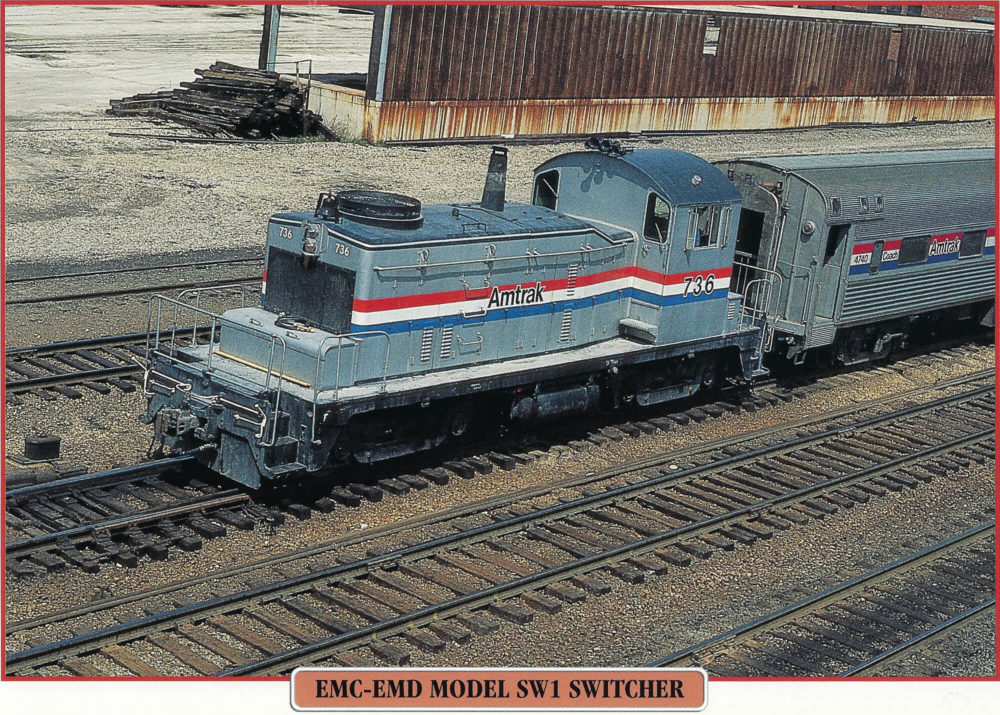
The photo of this Amtrak unit was likely taken in the 1980’s, and we find no evidence of it being seen since the 1990’s. However, it’s sister SW1 unit, number 737, was built for the New York Central in 1941 and was seen still working on the tracks leading into Washington’s Union Station within the last year … the oldest locomotive on the Amtrak roster, having recently celebrated its 78th birthday! Production of the SW1 continued through 1953.
What is the difference between the Electro-Motive Corporation’s — which was re-named the Electro-Motive Division, having been fully folded into General Motors in 1941 — Model SW1 and this model, the NW2? Not a whole lot … still categorized as a switcher, the NW2 offered greater horse-power, had a longer hood and was greater in weight, making it more universal than just switching cars in rail yards. One of the most utilitarian diesel locos ever, many railroads used it on branch-line freight and commuter passenger train service.
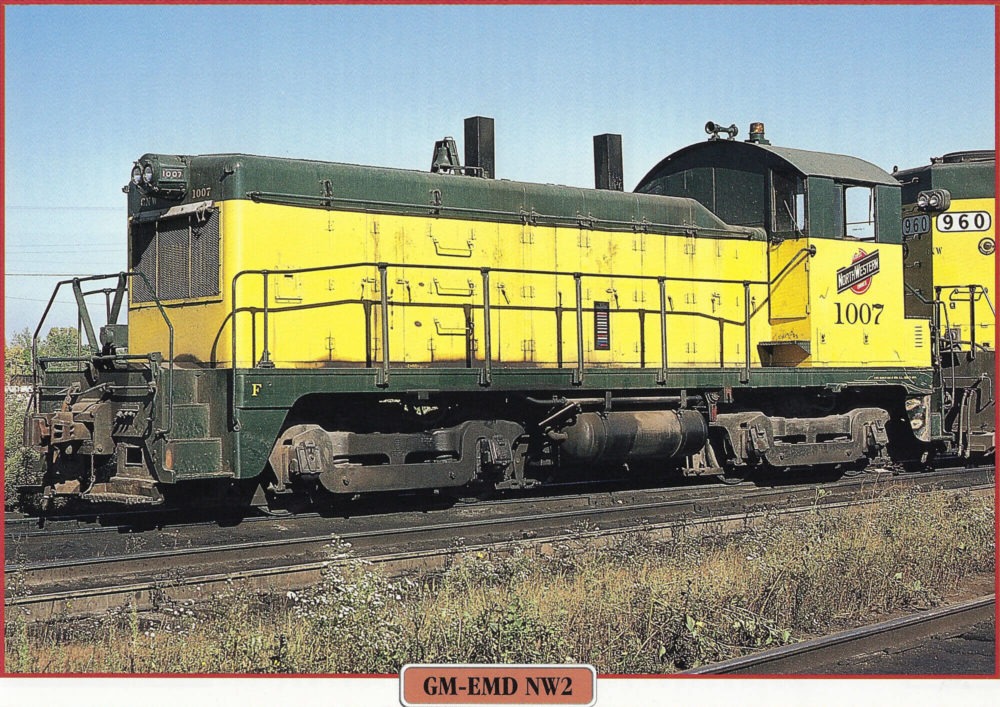
At the same time as these two switchers were being developed and prepared for market, EMC was also working on a larger, 2000-horse-power streamlined passenger locomotive for pulling long-distance passenger trains. The first of these engines, generally described due to its shape as a “car body,” was built in 1937 for the Baltimore & Ohio Railroad, now part of the CSX system. Since the Model EA’s revolutionary, “flashy” appearance caught everyone’s attention and also performed extremely well, EMC quickly offered limited numbers of Models E3, E4 and E5 prior to beginning regular production of the Model E6 in November 1939. The E6 was produced in two versions, the operating cab E6A and a booster unit E6B. From the original EA, all units through the E6 had the same general appearance.
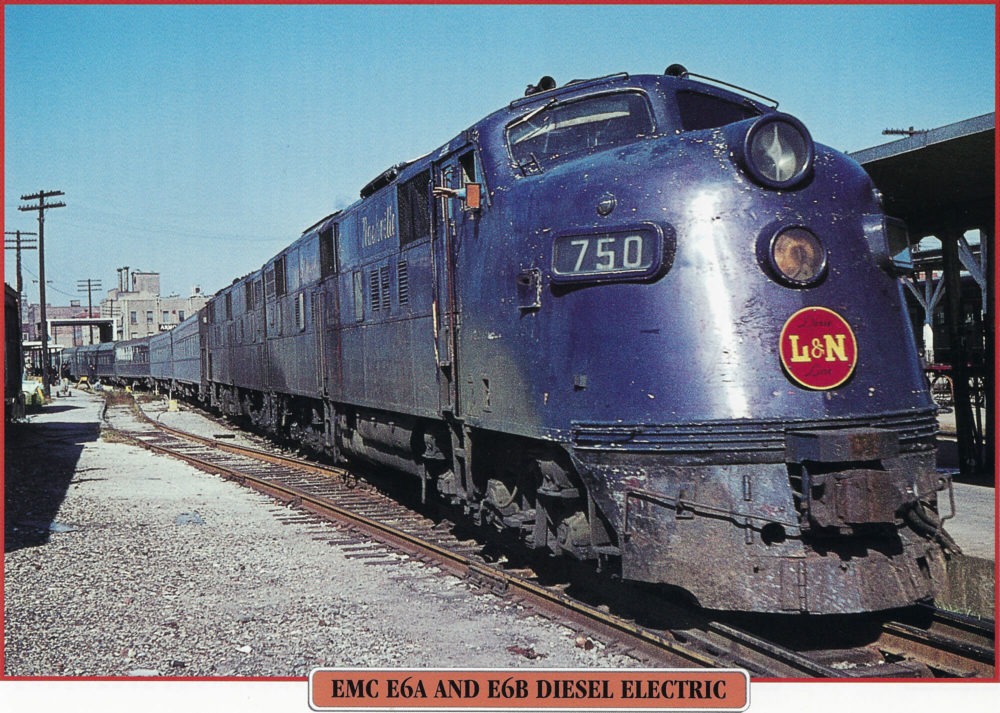
The Baldwin Locomotive Works was the largest and most successful steam locomotive builder in America, if not the world … with Matthias Baldwin having constructed his first locomotive in 1831, virtually at the beginning of steam-powered railroading. However, their foray into building diesel-electrics was a far different story … Baldwin was late to the game, as company management suffered from a mindset that diesels were not a viable replacement for the steam locomotives.
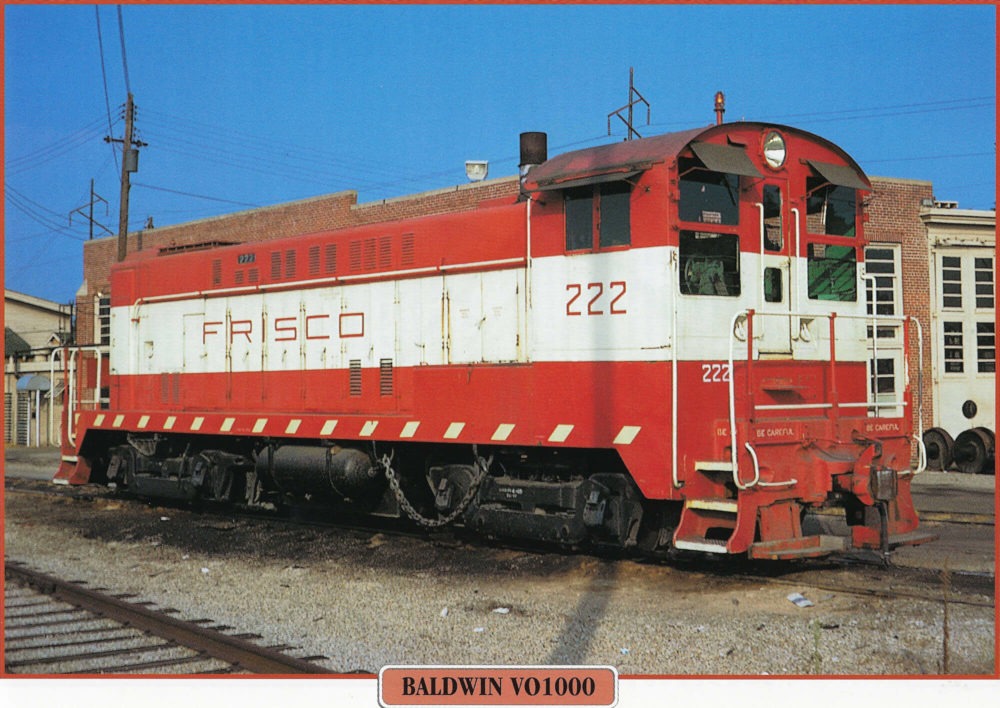
The only Baldwin diesel to go into production prior to World War Two was this unit, which would prove to be one of company’s all-time best-selling diesels, with more than 500 delivered by the time production ended in 1946.
While General Electric had been working with Alco and supplying the electric generators, motors and other components for the Alco diesel-electrics … in 1940 they introduced this series of small diesel switching locos, which immediately became popular with short-lines, industrial firms and the military. While production of these 44-ton units ended in 1956, you can find many of them still operational today.

Where Baldwin failed to compete in the new diesel arena, the American Locomotive Company did. With General Electric providing the electrical equipment, in April 1940 Alco introduced their Model S-2 1000-horsepower Switcher. In 1950, it was replaced in the Alco catalog by the S-4. Changes were minor overall, mainly a few design changes to allow the company to economize on production costs. Between the two models, more than 2,000 of these engines were acquired by North American railroads large and small, and continued to be produced until 1961.
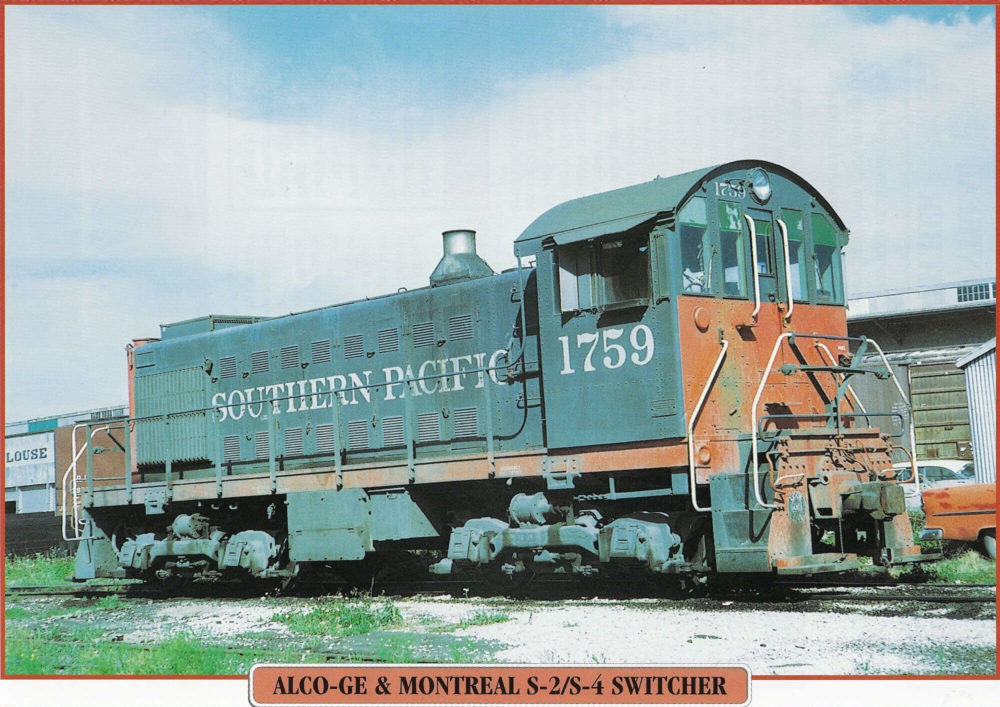
The Montreal name in this picture’s caption stems from Canada’s Montreal Locomotive Works, a locomotive builder established in 1883. It was acquired by Alco in the early 1900’s so as to make it easier tapping into the Canadian market … which was not really difficult as Alco held a leadership position in locomotive design, first in steam then later in diesel-electric rail power — with units destined for Canada constructed at MLW’s Montreal plant.
A year later, in 1941, Alco and General Electric introduced their Model RS-1, with “RS” standing for Road Switcher. Internally — mechanically and electrically — there was little difference between these two Alco units … the major items were the placement of the cab to give crew members better visibility and the RS-1 better geared for operation at higher speeds. There was also the option of installing a steam generator, necessary for use in suburban passenger service as passenger cars of the day were heated by steam.
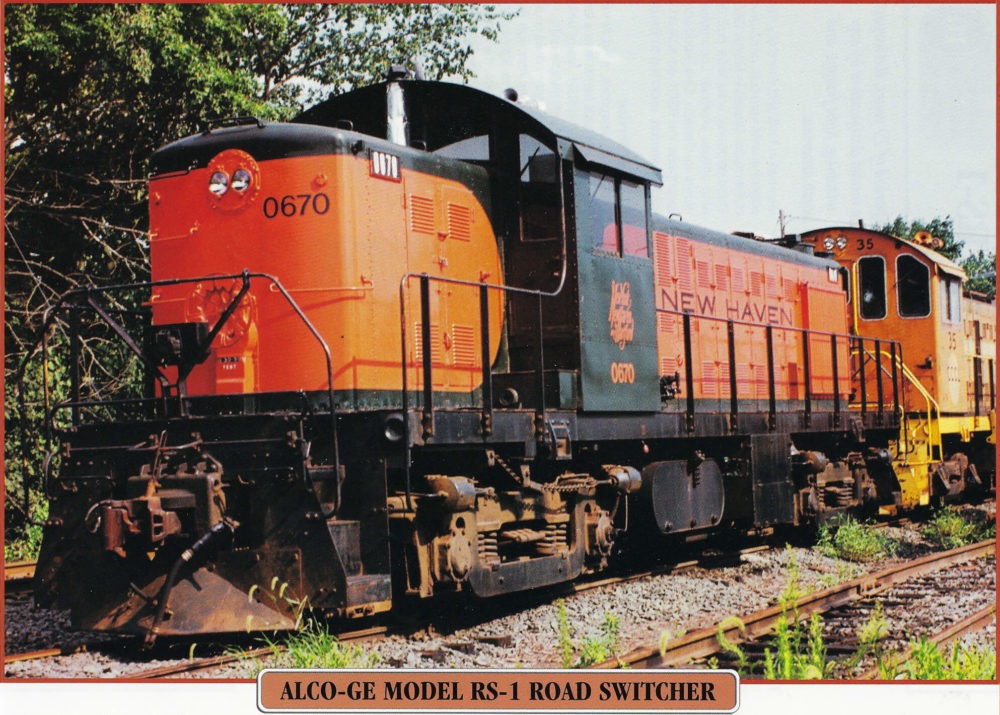
By the end of 1941, 13 units had been built, most carrying a small variation from the others in response to requests by individual railroads. However, none reached their buyers; by this time America had entered the War and all were requisitioned by the U. S. Army and shipped to foreign soil. After more had been built for the military, civilian production finally resumed in 1943 … with most North American railroads — and there were still many in the 1940’s and 50’s — owning a number of these, like the EMC units described above, very utilitarian engines. They were called “road switchers,” as many were used beyond moving cars around yards. As mentioned, they served for hauling passenger trains on regional lines as well as in branch line freight service. More innovative railroads had multiple-unit controls installed so that two or three could be operated together to handle longer freights on the “open road.” Upwards to 500 of the RS-1’s had been delivered by the time production ended in 1960.
Somewhere not too far down the tracks, I’ll bring you a series of photos and information about a group of diesel-electric engines which Alco, Baldwin and a few other makers introduced in the years immediately following World War Two … yet still well before the introduction of the “modern era” diesel locomotives seen in use today by the large freight railroads and on commuter and Amtrak passenger trains.
Let me leave you with a phrase I’ve been using for some time in signing off personal notes sent to friends in the rail fan community … which I think may be especially meaningful to all in this time unlike any other most of us have ever experienced:
“May your rails stay shiny for many a day to come!”
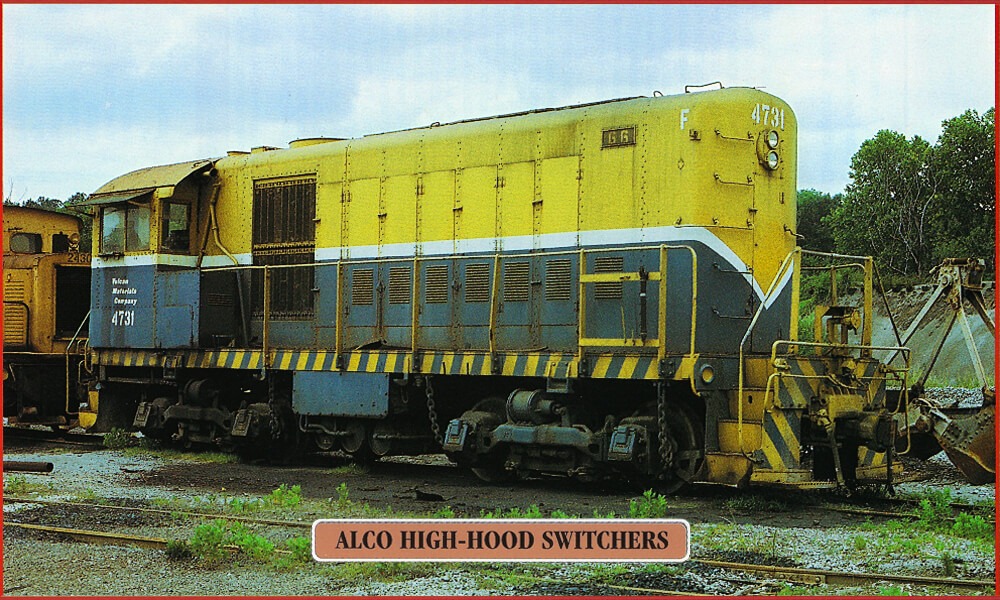
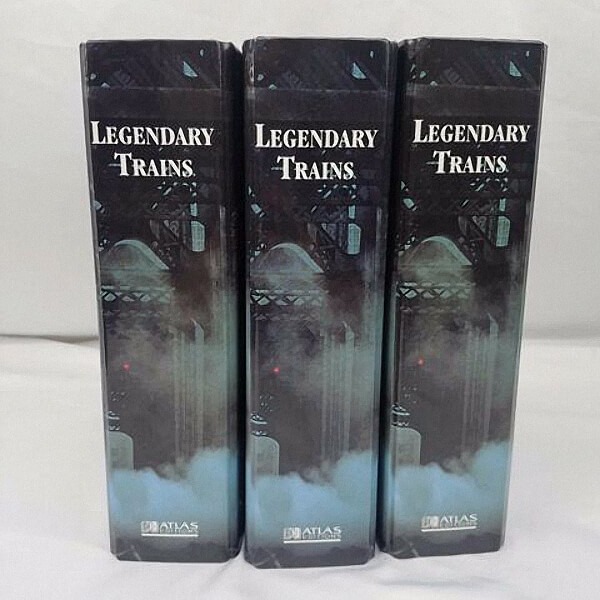

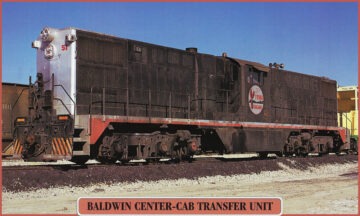
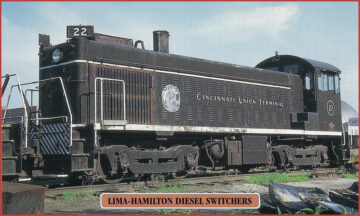

Loved this trip down memory lane. Growing up in the 50s I wanted to be a railroad engineer….all I wanted for Christmas every year were more Lionel 0 gauge trains…made my parents crazy.
Loved your book by the way.
An excellent review of the beginnings of the so called "First Generation'' of diesel era in North American railroading. Thanks for delving into this subject. Preservation of diesel locomotives is a bit tricky compared to preserving steam locomotives. Rust, dirt and the natural moisture cycle all combine to soon change a once preserved museum or park display unit into a rusted out hulk in the matter of a few short years.
Pretty concise review of the early diesels. My grandfather worked as a REA clerk with the New Haven, and retired before it merged into the Penn Central.
FYI: Amtrak SW1 #736 went to the Ohio Central and has now been retired. It's at the Age of Steam Roundhouse, now wearing pink livery:
https://www.ageofsteamroundhouse.org/emd-electro-motive-division-general-motors-corporation/
Thanks, Bill … appreciate your writing and comments.
Thank you for this bit of history. I worked for EMD from 1972
till 1989. Started with ATSF in 1990 and retired in 2020. Really enjoyed this article thank you
Marlin,
I think one item to consider is the wartime restrictions on diesel production. EMC/EMD were further ahead at the time in development, and allowed to continue with few restrictions. Baldwin and Alco were restricted, because the need for quickly assembled, proven technology (steam) was paramount.
Hence, all the loco builders did well during the war, but EMC/EMD definitely had a leg up afterwards.
John Becker
Very relevant points, John . . . thanks so much for sharing.
I think that in the case of the Baldwin Locomotive Works at Eddystone, PA in Chester County, PA there was also a failure to have a company vision for the end of the steam locomotive and what to do next.
Baldwin was not used to making a one size fits all product. Steam locomotives were largely built as what I would not call "one offs". That is no matter how many were in the order from a given carrier it was really made just for that carrier and no one else. Baldwin did have a catalogue but in reality when it came to mainline steam locomotives, be they freight, passenger, dual service they were designed specificly for the carrier writing the check.
Some of the early Alco units had a globe sized ball on the top of the smoke stack. what was the balls purpose ??
Personally, Lee … I had no idea – so, put the question out to several rail folks who I thought might have the real scoop; so far, this is the only response: My guess is it’s some type of smoke/flame filter. You used to see them a lot at grain elevators and other places where flames would be catastrophic.